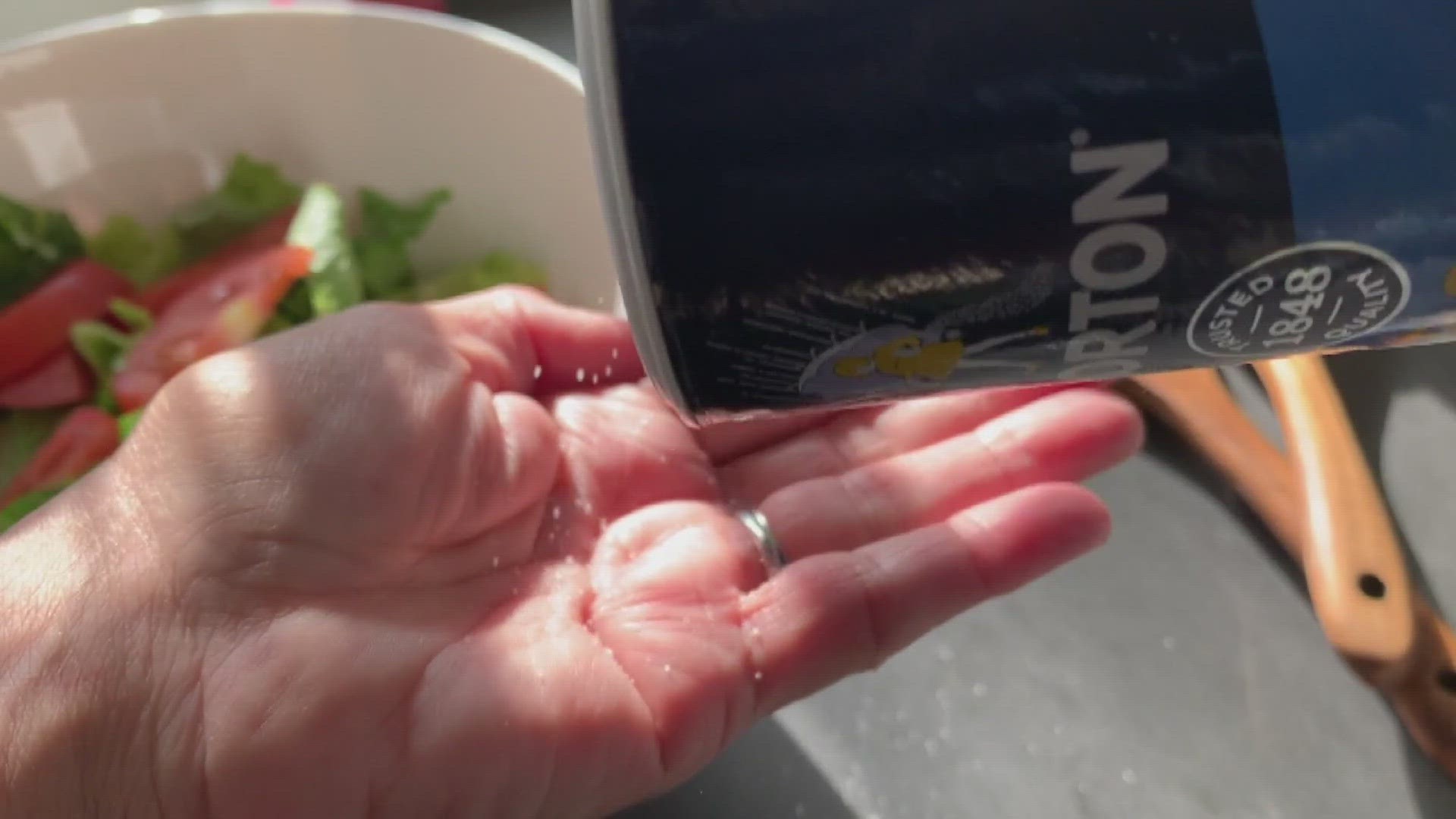GREENSBORO, N.C. — Reducing table salt can have some health benefits, but, cutting iodized salt can mean shorting yourself on an important nutrient —Iodine.
Our bodies are unable to make this mineral, yet it’s key for a healthy thyroid. Most adults need about 150 micrograms of iodine a day.
Cardiologists say table salt may be a good source of iodine, but it makes more sense to get this element through the foods we eat. We can get 158 micrograms from 3 ounces of cod. Dairy is also a good source. A three-quarters of a cup of plain nonfat Greek yogurt has 87 micrograms of iodine.
Love seaweed snacks? Some of them offer 90% of the recommended daily allowance per serving.
But if you’re still craving that flavor boost from the salt shaker, Consumer Reports tested some popular salt alternatives that have less sodium than salt, and some even supply iodine.
At the top of the list is Lite Salt, which is a blend of iodized salt and potassium chloride. This tasted the closest to table salt, with half the sodium.
MSG came in second, with 60% less sodium than salt. It adds umami, which bumps up the taste of your food.
Nutritional Yeast added a good savory flavor but potassium chloride salt turned out to be quite bitter.
Seaweed flakes have lots of fishy flavor but don't add much saltiness. By the way, a teaspoon of this provides all the iodine you need in a day.
Since some of the salt alternatives contain sodium, it’s important to still use them sparingly.
Experts say most of the sodium we consume comes from salt in packaged and processed foods, and this is often not iodized. Also, popular salts like sea, Himalayan, or kosher salts are not good sources of iodine.

